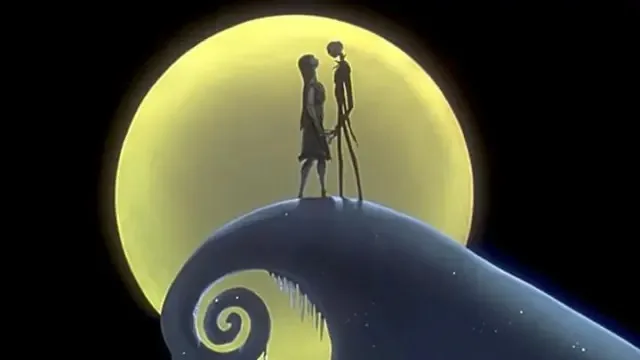
Find out why Tim Burton turned down the idea of a sequel to A Nightmare Before Christmas and how the film will continue in other formats
Cinema has taught us that sometimes masterpieces must remain unique, and The Nightmare Before Christmas is one of those intangible treasures. In a world where sequels flood theaters, this dark and charming classic bucks the trend and maintains its status as a standout. But what makes even Tim Burton, the creator of this movie, not willing to make a sequel?

A stop motion animation gem
This 1993 work takes us into a world where Halloween and Christmas collide. Henry Selick’s direction and Burton’s vision combine the macabre with the festive to create a spectacle that has never been seen before. On a modest budget, The Nightmare Before Christmas grossed an impressive $91 million worldwide, becoming a milestone in motion animation and popular culture.
Known for his unique style and original stories from Beetlejuice to Edward Scissorhands, Burton has always hated sequels. In the year In a 2006 interview, Burton expressed his desire to maintain the “purity” of the animated film, rejecting ideas such as Jack touring the world for Thanksgiving. This position emphasizes his commitment to artistic integrity, choosing to leave the audience with a pure memory of the first film.
Exploring the magic and cultural influence of Jack Skellington
Since his debut, Jack Skellington, the charismatic pumpkin king of Halloween Town, has become more than just a fictional character. It is an icon that crosses the screen, representing a unique combination of holidays and emotions. His search for meaning and identity, his curiosity about Christmas, resonated deeply with his generation of fans. Jack inspired not only flair and creativity, but countless merchandise from action figures to costumes, demonstrating his enduring influence on pop culture.


Comparing The Nightmare Before Christmas to other animated films, its unique stop motion style stands out. This technique, though laborious, gives the film a texture and beauty that is difficult to replicate in other media. The influence of this masterpiece can be seen in the series of animated films that have tried to capture that special magic that made the animated film a cultural phenomenon. Bold storytelling combined with magical, hand-drawn animation set a new standard in the genre, influencing creators and artists around the world.
Live beyond the big screen
While it may seem like a sequel, A Nightmare Before Christmas has found new ways to continue to captivate its audience. The video games The Nightmare Before Christmas: Oogie’s Revenge and The Pumpkin King allowed fans to further explore this universe. Additionally, books like Long Live the Pumpkin Queen and upcoming graphic titles will expand the film’s legacy, introducing us to new perspectives and adventures in the world Burton and Selick introduced us to.


While Beetlejuice has been back for more than thirty years, some fans still hold out hope for a continuation of the modern animated classic. However, Burton’s decision not to change his original work remains a strong argument against this. This respect for originality and quality is a pillar of his work, and what makes this cult animation an unforgettable piece of cinematic history.